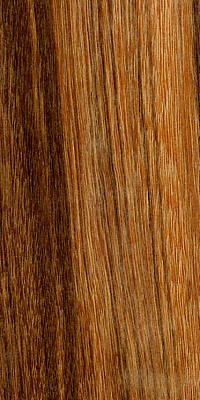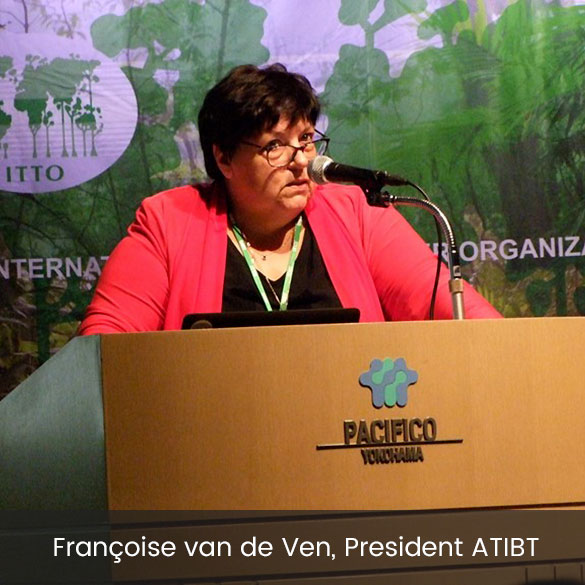

The tropical species alep grows in the dense rainforests of Central Africa. It is an exotic yellow-brown timber, very durable. The durability and strength of alep make it suitable for uses requiring strength and resistance. It is used in heavy work, as well as in exterior joinery. Alep naturally covers the use classe 5 (end-uses in marine environment or brackish water) du to its high specific gravity and its hardness.

Desbordesia insignis
Family: IRVINGIACEAE (angiosperme)
Commercial restrictions: no commercial restriction
Alep is a large tree of the tropical forests of Central Africa, which can reach 50 m in height and 1.5 m in diameter. The bole is straight, with large buttresses at the base. The foliage is in ball, and the edge is yellowish to orange.
The exotic species alep is very durable. It is a choice material for exterior joinery and heavy work.
The main uses for the exotic timber alep are as follows:
Outdoor equipment - Recreation
Industrial usage and heavy work
The tropical essence alep is found in Central Africa (Cameroon, Equatorial Guinea, Gabon, Congo) and in Nigeria in West Africa.
The exotic species alep grows in dense humid evergreen and semi-deciduous forests. The fruits are dispersed by the wind (anemochory) from December to February.
Read the the Tropix sheet (CIRAD).
Read the the Tropix sheet (CIRAD).
Read the the Tropix sheet (CIRAD).
Sources :
Copyright: Q. Meunier, C. Moumbogou, J.-L. Doucet, 2015, Les arbres utiles du Gabon
use(s) for this species :

Engage
Do you want forest resources to be preserved?
Do you want to contribute to helping local populations and to protect the fauna and flora?
Do you want to help us promote a sustainable material with exceptional qualities?
